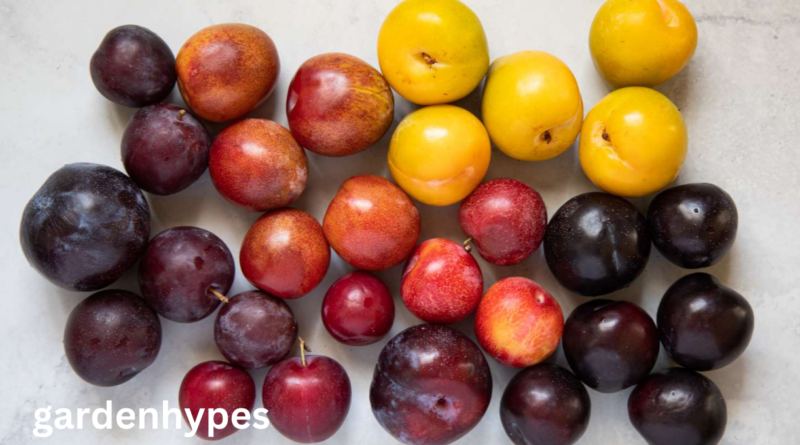Fruits That Look Like Plums Alternatives in Nature
Introduction
Fruits That Look Like Plums are one of the most popular stone fruits, widely loved for their juicy sweetness and slightly tart flavor. But here’s something interesting—many fruits around the world share an uncanny resemblance to plums. Some are closely related, while others belong to entirely different plant families yet still manage to trick the eye. Whether it’s their shape, size, or deep purplish hue, these fruits often get mistaken for plums at first glance.
click in link Fruits That Look Like Apples
Why does this matter? Well, knowing the difference between plums and their look-alikes can be useful for gardeners, food lovers, and especially foragers. Picking the wrong fruit in the wild could either surprise you with a new flavor or, in some cases, put your health at risk if the fruit is toxic. Beyond that, discovering these “plum twins” opens the door to exploring diverse tastes and cultures, since many of them are staples in different parts of the world.
In this blog, we’ll dive deep into fruits that look like plums, understand their unique features, and learn how to tell them apart. We’ll also explore their health benefits and culinary uses, so by the end, you’ll be a mini-expert in distinguishing plums from their fruity doppelgängers.
What Makes Plums Unique?
Before we talk about fruits that resemble plums, let’s first break down what makes plums special. Plums belong to the genus Prunus, which also includes cherries, apricots, and almonds. They are classified as stone fruits, meaning they have a fleshy outer part with a single hard pit inside.
Plums come in a variety of colors—red, purple, yellow, green, and even blackish-blue. The skin is typically smooth and can be tart, while the inside is soft, sweet, and juicy. Some plums are freestone, meaning the pit separates easily from the flesh, while others are clingstone, where the pit clings tightly to the flesh.
There are two main categories of plums:
- European Plums (Prunus domestica): Usually oval-shaped, firmer, and great for drying into prunes.
- Japanese Plums (Prunus salicina): Rounder, juicier, and perfect for eating fresh.
Plums are not just tasty—they’re rich in vitamins A, C, and K, as well as dietary fiber and antioxidants. This makes them excellent for digestion, skin health, and even heart wellness. Once you understand their core features, spotting a real plum becomes easier when compared to its look-alikes.
Why Do Some Fruits Look Like Plums?
Now, here’s the fascinating part. Why do so many fruits mimic the look of plums? The answer lies in nature’s design. Many fruits evolve to attract animals and humans for seed dispersal, and having a plump, colorful, and juicy appearance is nature’s marketing strategy.
Some plum look-alikes actually belong to the same Rosaceae family, which explains their similarity. Others, however, come from entirely different plant families but have coincidentally developed similar traits—a phenomenon called convergent evolution.
Additionally, hybridization and selective breeding play a role. Over centuries, farmers have cultivated fruits to be more appealing, sometimes leading to crossbreeds that resemble plums in color or shape. This is why fruits like damsons and sloes look so much like plums—they’re cousins. Meanwhile, others like jujubes or persimmons only look like plums because of their size and glossy skin.
So, in short, the plum look-alike club is a mix of biological relatives and distant fruity cousins that happen to share a wardrobe.
Fruits That Look Like Plums
Here’s where things get really interesting. Let’s take a tour of fruits that can easily fool you into thinking they’re plums.
Damson Fruit
Damsons are perhaps the closest relative to plums, often mistaken for them because they look nearly identical. They’re small, oval-shaped, and typically dark purple to black when ripe. Unlike most plums, however, damsons are more tart and less juicy, making them less suitable for eating raw but excellent for jams, jellies, and preserves.
In Europe, damsons have a long history of use in cooking, especially in pies, chutneys, and even damson gin. Their high pectin content makes them a favorite for jam-making. So while they may look like regular plums at the supermarket, biting into one raw will reveal the difference pretty quickly.
Jujube (Red Date)
At first glance, especially when fresh, jujubes can trick you into thinking they’re small plums. They’re round to oval with smooth skin that ranges from green to reddish-brown as they ripen. Inside, they’re crisp like an apple when fresh, and chewy like dates when dried.
Jujubes, often called “Chinese dates,” are popular in Asia and are packed with vitamin C, antioxidants, and calming properties. While they look like plums, the taste couldn’t be more different. Instead of juicy sweetness, you’ll get a crunchy, apple-like bite.
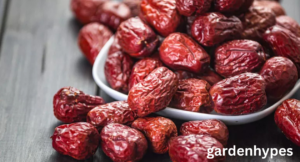
Java Plum (Jamun)
If you’ve ever seen a Java Plum, also called Jamun or Black Plum, you’ll know why it’s on this list. It’s oblong, deep purple to almost black, and has that glossy plum-like shine. Native to South Asia, it’s widely consumed fresh with a pinch of salt or turned into refreshing drinks.
click in link Fruits That Look Like Apples
Unlike regular plums, Jamun has a unique taste—slightly sweet, tart, and a bit astringent, leaving your tongue with a purple stain. It’s highly regarded in Ayurvedic medicine for its role in managing blood sugar levels, digestion, and immunity.
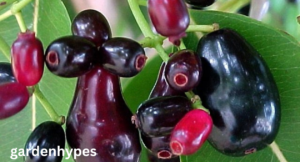
Blackthorn (Sloe Berry)
Sloe berries grow on the blackthorn shrub and look very similar to tiny wild plums. They’re round, purplish-blue, and have a whitish bloom on their skin, just like some plum varieties. However, don’t be fooled—raw sloe berries are mouth-puckeringly sour and astringent.
Traditionally, sloes are used to make sloe gin, a delicious liqueur where the berries are steeped in alcohol and sugar. They also feature in syrups, jellies, and even as a natural dye. While they might look like plums hanging in the hedgerows, their flavor is much harsher when eaten raw.
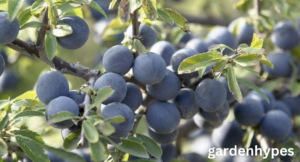
Cherries (Dark Varieties)
Certain dark cherries, especially Bing and Black Cherries, can look like tiny plums. They’re round, dark red to purple, and glossy. However, cherries are much smaller in size and have a distinct sweet-tart flavor that sets them apart.
Despite the size difference, the visual resemblance can confuse someone unfamiliar with both fruits. Like plums, cherries are also packed with antioxidants and are commonly used in desserts, juices, and even wines.
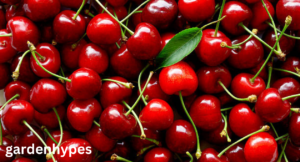
How to Tell the Difference Between Plums and Look-Alikes
Since so many fruits share plum-like features, how do you tell them apart? Here are some easy ways:
- Shape & Size: Plums are usually medium-sized and either round or oval. Fruits like cherries and sloes are much smaller, while persimmons and loquats are larger.
- Skin Texture: Plums have smooth, often waxy skin. Some look-alikes, like jujubes, wrinkle as they ripen.
- Taste: Plums balance sweetness with tartness. Damsons are more sour, Jamun has an astringent aftertaste, and persimmons taste honey-sweet when ripe.
- Seeds: Plums contain a single stone. Other fruits, like mulberries, are made of multiple drupelets with tiny seeds.
- Season & Region: Knowing where the fruit grows helps—Jamun thrives in South Asia, while sloes are common in Europe.
click in link Fruits That Look Like Apples
FAQs
- What fruit is most commonly mistaken for a plum?
Damsons are the most common fruit mistaken for plums because they share a very similar size, shape, and color. However, damsons are usually more tart and better suited for jams rather than eating raw. - Are Java plums (Jamun) the same as regular plums?
No, Java plums (Jamun) are not the same as regular plums. While they look similar due to their dark purple skin, Jamun has a more tart, astringent flavor and leaves a purple stain on the tongue. They also belong to a different botanical family. - Can jujube fruits be eaten like plums?
Yes, jujubes can be eaten fresh, but they don’t taste like plums. Fresh jujubes are crunchy like apples, and when dried, they resemble dates. Their texture and flavor are completely different from plums. - Are there any dangerous fruits that look like plums?
Yes, certain wild fruits like unripe sloes or some unfamiliar berries can look plum-like but may be too bitter or even mildly toxic when consumed raw. It’s always best to identify fruit carefully before eating, especially if foraging. - Which plum-like fruit is the healthiest?
Many plum look-alikes are packed with nutrients, but Jamun is particularly valued for its role in controlling blood sugar, while jujubes are rich in vitamin C. Plums themselves are excellent for digestion and antioxidants, making all of them healthy choices.
